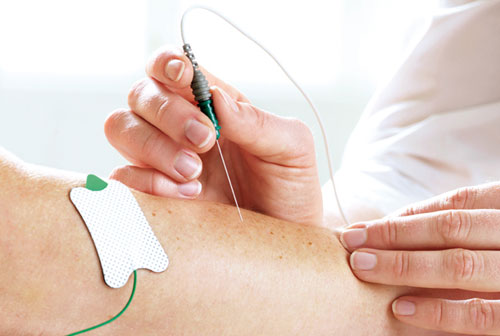
a very fine needle by Joe Stevens | 13:53
Your body is a sound device, its subtle coming from the depths of your body. Your body plays music, can you hear it.
A very fine needle is a recording of an electromyography (1) (EMG) test I underwent for Ocular Myasthenia. The test involves a very thin needle being inserted into a muscle to measure its electrical activity. The electrical activity picked up by the electrodes is then displayed on an oscilloscope (2) and an audio-amplifier is used so the activity can be heard, and evaluated, by the consultant. As an artist who works a lot with sound I found it completely fascinating, lying there and hearing my bodies muscle activity amplified by this process.
In enquiring about the method deployed I found out that the needle used here is a recording device. The needle has a silver wire (the active electrode) inside a shaft of metal (which is used as the reference electrode). By placing a ground electrode on the patient, the physician can obtain a very precise measurement, since the active electrode and the reference electrode are very close to each other.
I was fascinated to hear that I could control the sounds that you hear by flexing my eye muscle, by crunching my eyelids close, or relaxing them. It was like I was playing a musical instrument and I was that instrument. As the test involves registering electrical activity, by flexing my eye muscle, or by crunching my eyelids close, or relaxing them further, I could control the sounds.
Thus, in a way, this recording is an interaction between the electrodiagnostic consultant interacting with the recording equipment, from the level of entry at the recording electrode and myself controlling my eye muscles. It was collaboration between scientist and artist, one I would love to explore further.
(1) Electromyography (EMG) is a technique for evaluating and recording the electrical activity produced by skeletal muscles. EMG is performed using an instrument called an electromyograph, to produce a record called an electromyogram. An electromyograph detects the electrical potential generated by muscle cells when these cells are electrically or neurologically activated. The signals can be analyzed to detect medical abnormalities, activation level, recruitment order or to analyze the biomechanics of human or animal movement.
(2) A monitor that displays electrical activity in the form of waves.